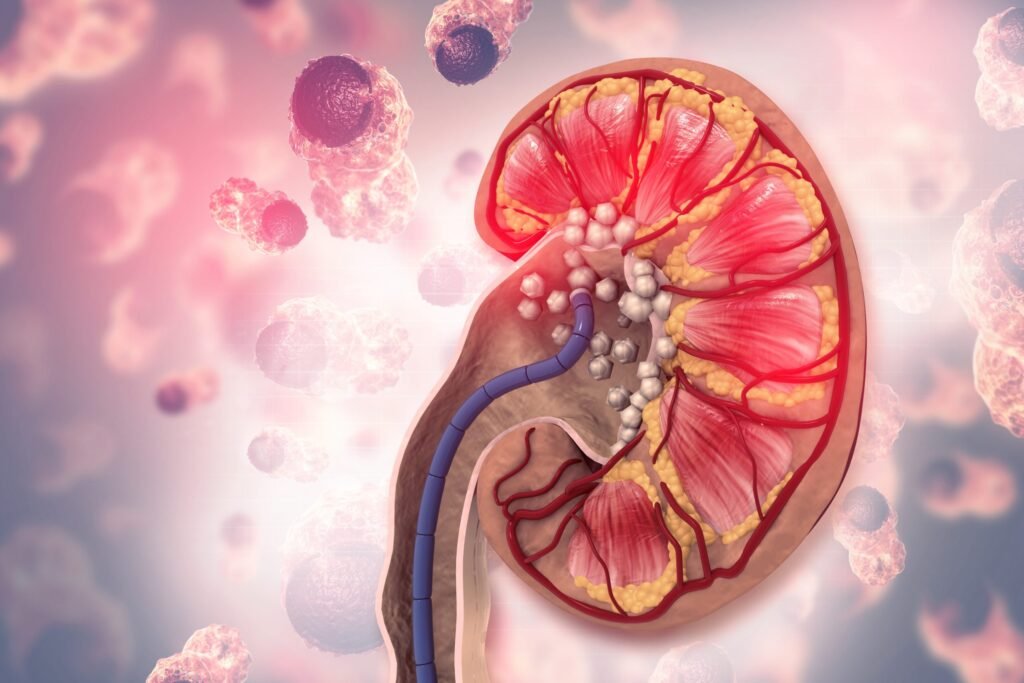Introduction
Kidney stones, medically known as nephrolithiasis, can cause severe pain and complications if not treated properly. One of the advanced surgical treatments for large or complex kidney stones is Percutaneous Nephrolithotomy (PCNL). This minimally invasive procedure is recommended when other treatments are ineffective or when stones are too large to pass on their own. In this blog, we will delve into everything you need to know about PCNL—how it works, when it’s necessary, and what to expect from the procedure.
What is Percutaneous Nephrolithotomy (PCNL)?
Percutaneous Nephrolithotomy (PCNL) is a surgical technique used to remove kidney stones that are too large to be treated with non-invasive methods like shockwave lithotripsy (ESWL). The term “percutaneous” means “through the skin,” indicating that the procedure involves a small incision in the patient’s back to access the kidney directly, allowing for the removal of stones with minimal trauma.
PCNL is often the treatment of choice for kidney stones larger than 2 cm, particularly those that are irregularly shaped, infected, or causing severe obstruction.
When is PCNL Necessary?
PCNL is typically recommended in the following scenarios:
- Large Stones: Stones larger than 2 cm in diameter are often too big to pass naturally or be broken down by other means.
- Complex Stone Composition: Stones made of cystine or calcium oxalate may not break down easily with ESWL.
- Irregularly Shaped Stones: Stones that form in complex areas of the kidney, such as staghorn stones (which resemble the shape of a deer’s antlers), often require direct removal.
- Failed Prior Treatments: If other procedures like ureteroscopy or ESWL have failed, PCNL is considered a better alternative.
- Recurrent Infections or Blockage: Stones that frequently cause infections or block urine flow need to be removed to prevent further complications.
How is PCNL Performed?
PCNL is performed under general anesthesia and involves several precise steps:
- Imaging Guidance: Pre-procedure imaging techniques such as ultrasound, fluoroscopy, or CT scans help locate the stones within the kidney.
- Small Incision: A small incision, usually about 1 cm in length, is made in the back. A needle is then inserted into the kidney to access the stone directly.
- Creating a Tract: A guide wire is passed through the incision, followed by a series of dilators to create a safe and secure pathway to the kidney.
- Inserting the Nephroscope: A nephroscope (a thin, tube-like instrument with a camera) is introduced through the incision. This tool allows the surgeon to visualize the stones in real-time.
- Stone Removal: Specialized instruments are used to break up the stones into smaller fragments or remove them in one piece. Larger stones may need to be fragmented using ultrasonic, laser, or pneumatic energy before removal.
- Post-Procedure Drainage: After the procedure, a nephrostomy tube or stent may be placed temporarily to help drain urine and prevent infection while the kidney heals.
Recovery After PCNL
The recovery period following PCNL is generally faster than traditional open surgery. However, patients usually need to stay in the hospital for 1 to 2 days for observation.
- Pain Management: Patients may experience mild to moderate pain at the incision site, which is manageable with painkillers.
- Post-Operative Care: Proper wound care and following the doctor’s instructions regarding hydration, diet, and medications are essential for preventing infections.
- Return to Normal Activity: Most patients can resume normal activities within 1 to 2 weeks, depending on their overall health and the complexity of the procedure.
Potential Risks and Complications
Although PCNL is a safe procedure with a high success rate, it carries some risks, including:
- Infection: Like any surgery, there is a risk of infection at the incision site or in the kidney.
- Bleeding: Some bleeding is normal during PCNL, but in rare cases, a blood transfusion may be needed.
- Injury to Nearby Organs: Although uncommon, there is a small risk of injury to nearby organs such as the bowel or liver.
- Stone Recurrence: Without proper dietary and lifestyle changes, stones may recur even after successful removal.
Advantages of PCNL
- Effective for Large Stones: PCNL is one of the most effective procedures for removing large kidney stones in one go.
- Minimally Invasive: Unlike open surgery, PCNL requires only a small incision, leading to quicker recovery and less post-operative pain.
- High Success Rate: The procedure has a high success rate, especially for stones that have been resistant to other treatments.
- Reduced Hospital Stay: Most patients can return home within a couple of days after the procedure.
Preventing Kidney Stones After PCNL
After undergoing PCNL, it’s crucial to make lifestyle adjustments to prevent the formation of new kidney stones. Some preventive measures include:
- Stay Hydrated: Drink plenty of water to dilute urine and prevent the formation of new stones.
- Limit Salt and Oxalate Intake: Reducing sodium and oxalate-rich foods (like spinach, nuts, and chocolate) can lower the risk of stone formation.
- Maintain a Healthy Diet: A diet low in animal protein and rich in fruits and vegetables can help prevent recurrence.
- Regular Follow-Up: Regular check-ups with your healthcare provider are important to monitor for new stone formation.
Conclusion
Percutaneous Nephrolithotomy (PCNL) is a highly effective and minimally invasive procedure for removing large or complex kidney stones. It offers a high success rate, shorter recovery times, and fewer complications compared to traditional surgery. If you’re dealing with kidney stones that haven’t responded to other treatments, PCNL may be the ideal option for you. Always consult with your healthcare provider to understand the best course of action based on your specific condition.
By following post-operative care guidelines and making preventive lifestyle changes, you can reduce the risk of future kidney stones and maintain better overall kidney health.

